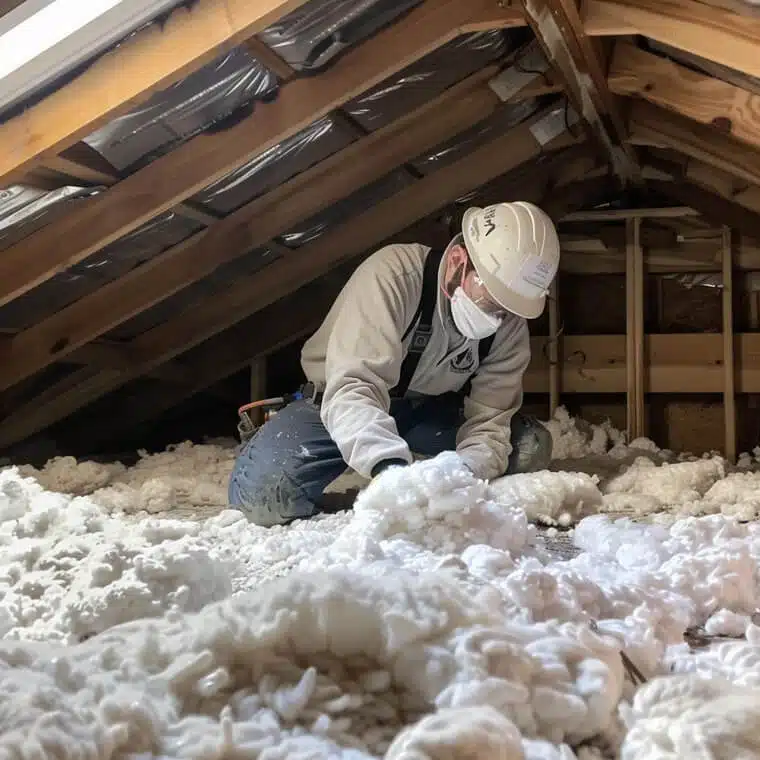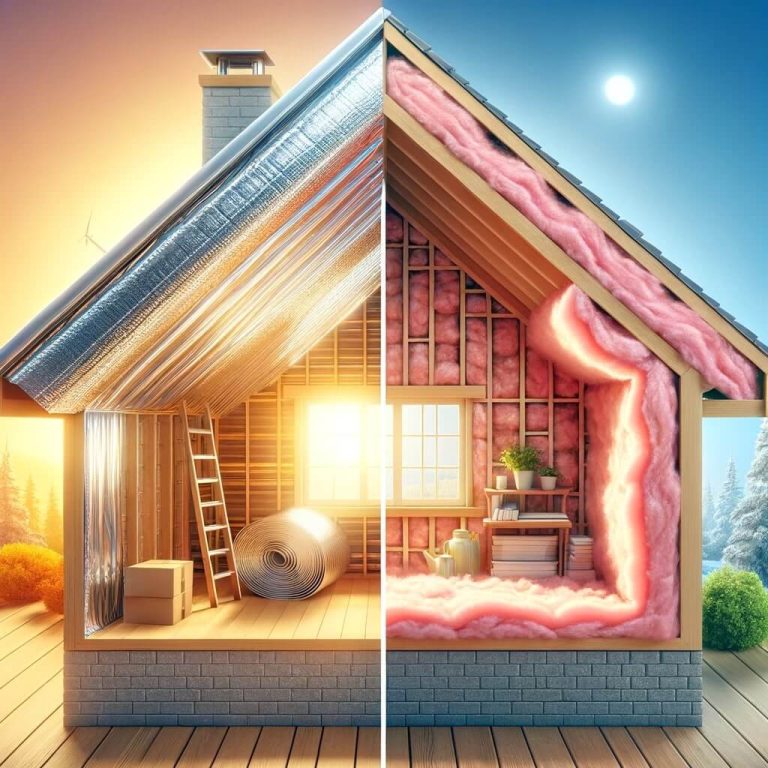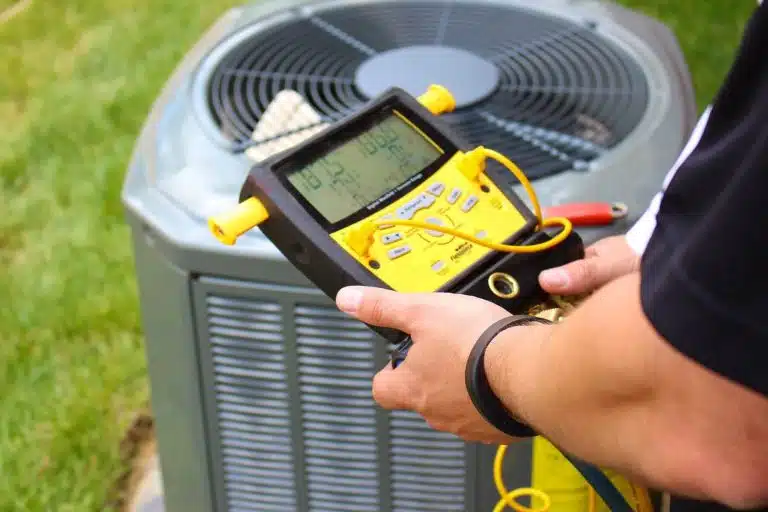During the summer, the sun’s UV rays and heat can penetrate your home’s roof, causing heat buildup in the attic and walls. Radiant barriers work to prevent this heat accumulation, reducing the amount of heat entering your home. But is a radiant barrier worth the investment? Let’s see do radiant barriers work and explore their benefits to help answer the question, is radiant barrier worth it?
How Is a Radiant Barrier Effective?
To answer the question, does radiant barrier work? Yes, it does. A radiant barrier effectively reduces heat transfer in the home, particularly within the attic space. The process begins with the sun’s radiant energy heating the roof of the house. This radiant heat is then transferred through conduction, leading to heat buildup within the attic.
To answer the question, does attic radiant barrier work, you need proper installation. A properly installed radiant barrier can address this heat gain by reducing or eliminating heat conduction, convection, and radiation. The barrier’s reflective surface is key in preventing heat transfer into the home. When positioned correctly, the reflective nature of the radiant barrier enables it to intercept the sun’s radiant heat, preventing it from entering the attic and, ultimately, the living space below. This will answer your query: do radiant barriers really work?
By effectively blocking the transfer of heat, the radiant barrier helps to maintain a cooler attic, which in turn reduces the overall heat load on the home. There you have it – is the attic radiant barrier worth it? Absolutely!
Homeowner Tip: Regularly inspect, maintain and repair your HVAC system to ensure it’s running efficiently. Changing air filters, cleaning vents, and scheduling routine maintenance can help improve the system’s performance, extend its lifespan, and reduce energy costs.
How Does a Radiant Barrier Work?
So, how does radiant barrier work? Radiant barriers work by utilizing reflective materials to block radiant heat transfer. To ensure their effectiveness, radiant barriers should be installed by licensed professionals. This will take away the question is a radiant barrier worth it. Proper installation involves precise positioning and ensuring cleanliness to maximize their performance.
So, are radiant barriers worth it? These barriers are designed to complement existing wall or attic insulation, enhancing the home’s overall thermal performance. By preventing radiant heat from penetrating the home, radiant barriers play a crucial role in maintaining a cooler indoor environment, ultimately reducing the load on air conditioning systems and improving energy efficiency.
Licensed professionals have the expertise to assess the specific needs of your home and ensure that the process of radiant barrier installation goes smoothly. By working alongside insulation and effectively reflecting radiant heat, these barriers contribute to a more comfortable living environment and help lower energy consumption and utility costs. Once installed correctly, you will understand how do radiant barriers work.
Homeowner Tip: When considering installing a radiant barrier, be sure to consult with licensed professionals who have experience with this type of insulation. Their expertise can help ensure the proper installation and positioning of the barrier, maximizing radiant barrier effectiveness and providing a radiant barrier R value.
What Are the Benefits of a Radiant Barrier?
There are several benefits to installing a radiant barrier in your home, particularly in locations experiencing high temperatures all year round. This answers the question, is radiant barrier worth it in Texas and other hot climates, for that matter.
Improved home comfort
Radiant barriers are highly effective in reducing heat transfer through the roof, helping to maintain a cooler indoor environment. In addition to their main use in attics and walls, radiant barriers can be used to insulate water pipes, hot water tanks, and wrapping ducts, providing energy-saving benefits throughout the home.
Lower cooling costs
Radiant barriers can significantly reduce the heat that enters the home through the roof, thereby lightening the load on your air conditioning system. And let us remind you that air conditioning installation and replacement is an important step when it comes to home insulation. While radiant barriers alone may reduce cooling costs by 5-10%, they can significantly reduce cooling expenses when combined with insulation, potentially saving hundreds of dollars annually.
Increased energy efficiency
Radiant barriers help improve energy efficiency by reducing the heat entering your home. This can lead to lower energy consumption and reduced utility bills, ultimately resulting in long-term savings for homeowners.
Enhanced lifespan of roofing materials
High temperatures, particularly in sunny climates, can cause roofing materials to deteriorate over time. Radiant barriers can help to prolong the lifespan of your roofing materials by reducing the amount of heat they are exposed to. On the other hand, radiant barriers are unaffected by humidity, making them effective in both low- and high-humidity areas.
Environmentally friendly
Radiant barriers can help reduce energy consumption and environmental impact by improving your home’s energy efficiency. Also, unlike some insulation materials, radiant barriers are non-toxic, making them safe for home use and posing no risk to the occupants’ health.
Homeowner Tip: Consider installing a programmable thermostat in your home to control your heating and cooling systems more efficiently. Programming it to adjust temperatures based on your schedule can help save energy and reduce utility costs.
Take Care of Your Insulation Needs
So, does a radiant barrier really work? Radiant barriers offer an effective solution for reducing heat transfer into your home and can lead to considerable savings on cooling costs, especially in hot climates. Reach out to Envirosmart Sulution Inc. for effective radiant barrier installation services. Contact us today and get a free quote!
Bibliography
- Effect of Radiant Barrier on Heating and Cooling Bills. (n.d.). Web.ornl.gov. Retrieved July 19, 2024, from https://web.ornl.gov/sci/buildings/tools/radiant/rb2/#:~:text=The%20tests%20to%20date%20have
- Radiant Barriers. (n.d.). Energy.gov. Retrieved July 19, 2024, from
https://www.energy.gov/energysaver/radiant-barriers#:~:text=Radiant%20barriers%20are%20more%20effective - Home Energy Consultants, https://www.dnr.louisiana.gov/assets/tad/pdfs/radiant_barrier_factsheet2010.pdf.
Accessed 20 July 2024.







